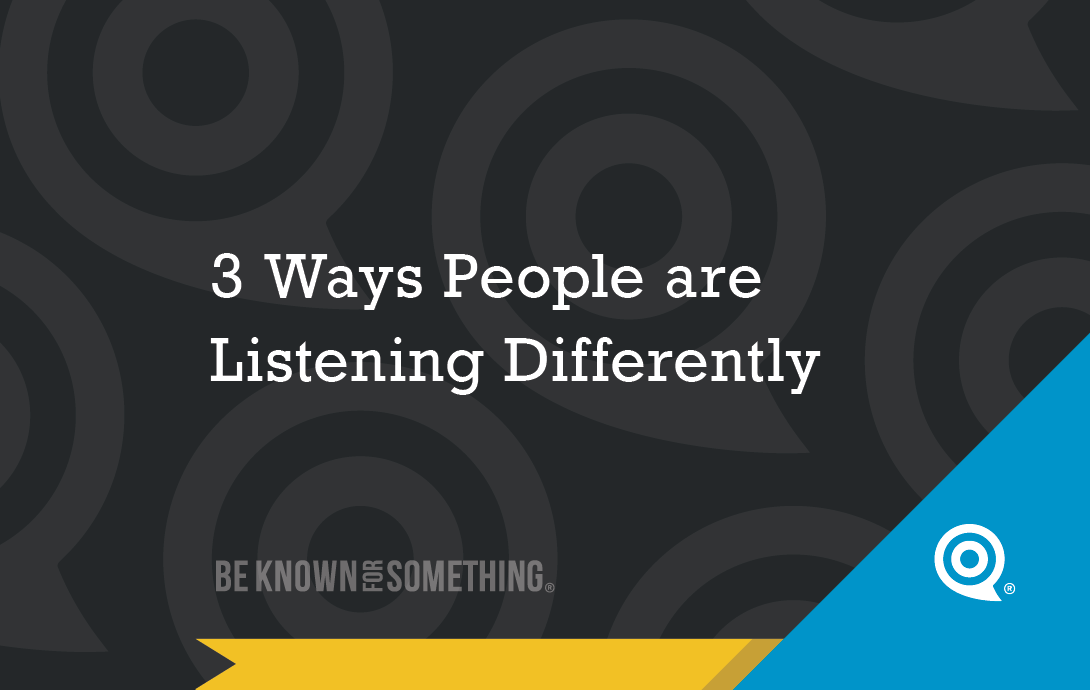Yikes, People are Listening Differently (3 ways)

I remember years ago, on a summer vacation, my parents stopped near a lake to take a break from driving and to allow our family to stretch our legs. My brother was probably picking on me so I’m sure my parents were the ones who needed the break from us!
My Dad suggested that we go fishing. He pulled a couple of rods from the trunk and then we dug for worms. After several minutes of looking, we gave up finding good bait. My Mom “thought” she read that raisins worked as good as worms. She may have made it up since 1) she wanted us to fish and 2) she had a box of raisins. For a couple of quiet hours, my brother and I sat, enjoying the scenery. But we caught nothing. If, in fact, fish used to like raisins, they must’ve changed.
Why continue to do something that’s not working? I’ve never fished with raisins again throughout my life for good reason. It’s not the raisin’s fault, it’s the fish’s fault.
Church communications is all about “fishing” for people to receive our very important message. But the majority of churches haven’t been successfully reaching their communities. Why? People are listening very differently.
We need to stop using the same bait. Here are 3 ways we all listen differently and what to do about it:
- Attention spans are shorter. People used to listen to longer messages. Now? Thanks to the way most of us receive communications, we can only take in smaller pieces of information. Some say we only have 8-second attention spans! Certainly our attention-spans are seriously limited. Just a few seconds before wanting to move on. What should we do then? Reduce the length of information delivered. Maybe 40-minute sermons need to be reduced! If you must tell a long message however, continuously interrupt people during it. Use a video or an image to illustrate points. Get someone else to share a story during your message. Be creative!
- What’s in it for me? Everyone listens for their benefit. If communication seems to be for someone else, they’ll start to ignore you. Once people put you on ignore it’s even harder to gain their attention back. What to do? Make sure you connect the dots to everything you’re communicating. Get people to see themselves in everything you’re sharing. Most importantly? Don’t share anything to anyone unless it relates to the vast majority of them. That’s your role!
- Visual learners are taking over. We live in a visual world. Of all the ways we learn and take in information, visual has become more appealing. People don’t want to read long PowerPoint-style slides that often accompany our messages. So how do we change? Always interrupt (see point 1) with visuals. Or create interactive visual aids that emphasize our points.
Stop doing the same things expecting different results. Start communicating in a way that will reconnect to our congregations and community. Get them to listen with the best bait. That’s what Jesus meant when He directed us to be fishers of men!
Let us help you understand your community better through demograpics and focus groups.
Want 25 Game-Changing Resolutions?
Related Posts

3 Church Leadership Skills That Transform Your Ministry
You didn’t accept a call to ministry just to maintain the status quo. You were called to lead to inspire,

How to Create a Church Marketing Strategy That Reaches Your Community
You’ve been called to lead a church that makes a difference in your city. That means developing a clear church

Top 10 Church Digital Marketing Strategies for 2026
What’s Changing, What’s Working, and What’s Next 2026 will be a year of rapid change for church digital marketing strategies

